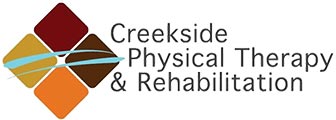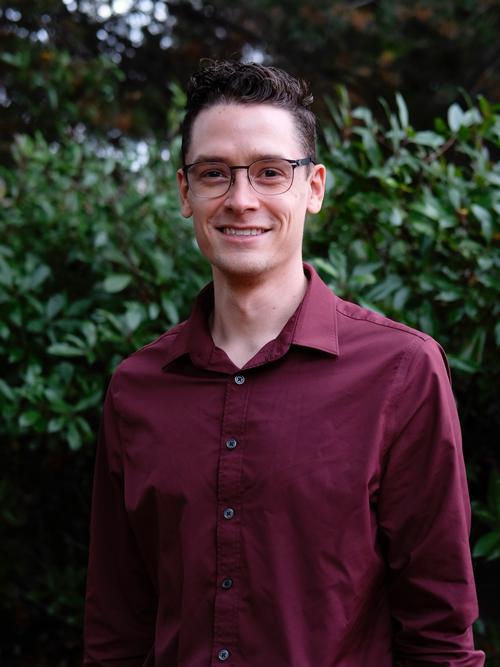Rotator cuff injuries are one of the most common ailments of the upper extremity leading to pain, dysfunction, disrupted sleep, and difficulty performing work and daily activities.
General anatomy

The rotator cuff is comprised of four muscles: the supraspinatus, infraspinatus, subscapularis, and teres minor. The tendons of these muscles fuse, forming a singular sheet that envelopes the head of the humerus, or upper arm bone (1,3). The joint in which they act upon is called the glenohumeral joint, named after the structure in which the head of the humerus rests upon in the scapula - the glenoid fossa. The scapula acts as the base from which the upper extremity operates from, and is important for energy transfer and proper functioning of the rotator cuff (7). There is a space that is formed between a prominence on the scapula, the acromion process, and the head of the humerus, named the subacromial space. This space is where the rotator cuff travels through and can become impinged with improper mechanics leading to tears and other dysfunction (2).
The muscles comprising the rotator cuff serve several roles, including contribution to movement of the upper extremity, providing passive tension and dynamic stabilization of the glenohumeral joint, and supporting the joint capsule (1,8). Several muscles that act upon the scapula are also important for rotator cuff health, including the serratus anterior and lower trapezius, and contribute to rotation, tilting, and stabilization of the scapula (5). External rotation, posterior tilting, and upward rotation in particular preserve the subacromial space allowing increased freedom of movement for the rotator cuff to act (7).
Types of Rotator Cuff Injuries
Rotator cuff injuries can be defined by the size of the injury. Small tears are those less than 1 cm, moderate tears are between 1-3cm, large tears are 3-5cm, and massive tears are those greater than 5cm (1). Despite the range of potential injury, research suggests that there is no significant correlation between the size of the tear and having symptoms such as pain and dysfunction (1). There is also evidence to suggest that the rate of tears between symptomatic and asymptomatic persons is around the same (1). However, asymptomatic tears are likely over time to develop into symptomatic tears and are positively correlated with age, as 40% of people over the age of 60 have evidence of rotator cuff tearing (4).
How to Treat Rotator Cuff Injuries
.png) The type of intervention to address symptomatic rotator cuff tendon tears varies, often by the extent of the injury. Full thickness tears of the rotator cuff will not heal without surgical intervention, and generally with greater size of tearing, there will be an increased rate of progression of the tear (6). Small/partial tears on the other hand do respond well to conservative management, where the rate of progression is not as extreme, and joint degeneration is less likely to be seen in long-term follow ups (6).
The type of intervention to address symptomatic rotator cuff tendon tears varies, often by the extent of the injury. Full thickness tears of the rotator cuff will not heal without surgical intervention, and generally with greater size of tearing, there will be an increased rate of progression of the tear (6). Small/partial tears on the other hand do respond well to conservative management, where the rate of progression is not as extreme, and joint degeneration is less likely to be seen in long-term follow ups (6).
Research suggests that the rate of re-tear is high with rotator cuff repairs, but the tears seen are often smaller, and the improvements in muscular coordination and strength may contribute to pain relief, as well as slowing the progression of the tear (6). With large, acute tearing of the rotator cuff, there is evidence that earlier surgical intervention can lead to improved results compared to delayed intervention (6). Therefore, while conservative management can be an effective solution for some, the size and extent of the injury is an important consideration when creating a treatment plan to prevent further injury (5).
Physical Therapy Treatment of Rotator Cuff Injuries
 There are several key components of a comprehensive rehab program. While conservative management of the tear will not restore the disruption in tissue, it can restore the mobility of the scapular and glenohumeral joints, as well as increasing the strength and coordination of these joints to reduce the roots of the dysfunction. Scapular coordination is especially important, as dysfunction in these muscles can be a cause for the tearing to take place; in fact, performing scapular exercises alone has shown to reduce pain and disability with these injuries (5,8). Other exercises strengthening the rotator cuff musculature and improving the dynamic stabilization component of their role in the shoulder complex is also important for a reduction in pain and improved function (1,3).
There are several key components of a comprehensive rehab program. While conservative management of the tear will not restore the disruption in tissue, it can restore the mobility of the scapular and glenohumeral joints, as well as increasing the strength and coordination of these joints to reduce the roots of the dysfunction. Scapular coordination is especially important, as dysfunction in these muscles can be a cause for the tearing to take place; in fact, performing scapular exercises alone has shown to reduce pain and disability with these injuries (5,8). Other exercises strengthening the rotator cuff musculature and improving the dynamic stabilization component of their role in the shoulder complex is also important for a reduction in pain and improved function (1,3).
Each patient is evaluated on a case-by-case basis and will begin in different parts of the rehab process - examples of scapular and rotator cuff strengthening exercises can be found below:
-
Supine protraction
![low row]()
-
Low row
-
Sidelying external rotation with a dumbbell
-
Lateral raises
-
Scapular Y's
Our trained physical therapists can provide you with a wholistic and comprehensive program to guide you in recovering from your shoulder pain today.
How Physical Therapy can Help Your Rotator Cuff Tendon Pain
Our physical therapists at Creekside can help you recover from your rotator cuff injury. They will assess your shoulder & spine to provide a whole-body solution to your pain. They will work with you to develop a plan to return to sleeping, lifting, reaching, dressing and exercising without pain. This plan often includes:
- Kinetic chain and spinal assessment:
- The entire kinetic chain affects the amount of work that the rotator cuff tendons have to perform. By improving spinal movement & stability as well as movement patterns, the less work the painful rotator cuff tendons have to do.
- Hands on treatment to decrease pain:
![shoulder manual therapy]()
- IASTM is effective at improving muscle & fascial mobility throughout the shoulder. This can decrease how much 'tightness' and pain you feel with raising your arm.
- MFD helps to increase the mobility of the layers of connective tissue through the shoulder complex. This decompressive technique can improve the tendon's mobility and decrease tightness & pain.
- Exercise to strengthen the tendon:
- You must strengthen the rotator cuff tendons to fully recover. Your therapist will develop a tendon strengthening program to restore your tendon's health.
![bfr shoulder strengthening]() Blood-Flow Restriction (BFR) Exercise Therapy:
Blood-Flow Restriction (BFR) Exercise Therapy:
- BFR simulates higher intensity tendon strengthening exercises without requiring high intensity tendon loading. It can increase muscle and tendon strength faster than traditional exercise (and oftentimes with less exercise-related pain as well.
- Taping for stability:
![shoulder taping]()
- Taping interventions can temporarily improve pain with shoulder use and overhead reaching.
Our experienced physical therapists will be able to guide you in your recovery and provide you with the resources to reduce your pain, improve function and stability in the shoulder, and return to the activities you love most.
Creekside Physical Therapy Now Has 3 Convenient Locations in Portland, Oregon
Message us now to get scheduled with one of our skilled Physical Therapists at any of our locations:
- Tigard - Oleson: 9115 SW Oleson Rd, Ste. #206 Portland, Oregon, 97223
- Tigard - Locust: 9445 S Locust St., Tigard, Oregon, 97223
- Cedar Mill: 12400 NW Cornell Rd, Ste. #200 Portland, Oregon, 97229
References
- Ainsworth R, Lewis JS. Exercise therapy for the conservative management of full thickness tears of the rotator cuff: a systematic review. Br J Sports Med. 2007 Apr;41(4):200-10. doi: 10.1136/bjsm.2006.032524. Epub 2007 Jan 30. PMID: 17264144; PMCID: PMC2658945.
- Consigliere P, Haddo O, Levy O, Sforza G. Subacromial impingement syndrome: management challenges. Orthop Res Rev. 2018 Oct 23;10:83-91. doi: 10.2147/ORR.S157864. PMID: 30774463; PMCID: PMC6376459.
- Edwards P, Ebert J, Joss B, Bhabra G, Ackland T, Wang A. EXERCISE REHABILITATION IN THE NON-OPERATIVE MANAGEMENT OF ROTATOR CUFF TEARS: A REVIEW OF THE LITERATURE. Int J Sports Phys Ther. 2016 Apr;11(2):279-301. PMID: 27104061; PMCID: PMC4827371.
- Lawrence RL, Moutzouros V, Bey MJ. Asymptomatic Rotator Cuff Tears. JBJS Rev. 2019 Jun;7(6):e9. doi: 10.2106/JBJS.RVW.18.00149. PMID: 31246863; PMCID: PMC7026731.
- Longo UG, Risi Ambrogioni L, Candela V, Berton A, Carnevale A, Schena E, Denaro V. Conservative versus surgical management for patients with rotator cuff tears: a systematic review and META-analysis. BMC Musculoskelet Disord. 2021 Jan 8;22(1):50. doi: 10.1186/s12891-020-03872-4. Erratum in: BMC Musculoskelet Disord. 2021 Sep 2;22(1):752. PMID: 33419401; PMCID: PMC7796609.
- Narvani AA, Imam MA, Godenèche A, Calvo E, Corbett S, Wallace AL, Itoi E. Degenerative rotator cuff tear, repair or not repair? A review of current evidence. Ann R Coll Surg Engl. 2020 Apr;102(4):248-255. doi: 10.1308/rcsann.2019.0173. Epub 2020 Jan 3. PMID: 31896272; PMCID: PMC7099167.
- Tsuruike M, Ellenbecker TS. Serratus anterior and lower trapezius muscle activities during multi-joint isotonic scapular exercises and isometric contractions. J Athl Train. 2015 Feb;50(2):199-210. doi: 10.4085/1062-6050-49.3.80. PMID: 25689561; PMCID: PMC4495440.
- Zhang M, Zhou J, Zhang Y, Zhang X, Chen J, Chen W. Influence of Scapula Training Exercises on Shoulder Joint Function After Surgery for Rotator Cuff Injury. Med Sci Monit. 2020 Oct 29;26:e925758. doi: 10.12659/MSM.925758. PMID: 33116073; PMCID: PMC7607672.



.png)
.png) Blood-Flow Restriction (BFR) Exercise Therapy:
Blood-Flow Restriction (BFR) Exercise Therapy:
